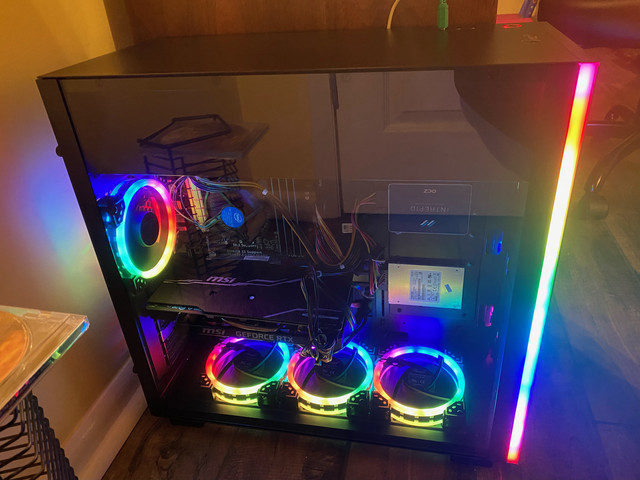Hi all, I'm a total idiot when it comes to this stuff so please forgive me as this is my first PC build...
Speaking of which, right now it looks like this.

I obviously don't plan on keeping it that way. I bought a Dell Optiplex 9020 SFF PC for gaming not really knowing what I was getting into. I quickly realized it didn't quite do everything I wanted so I set on upgrading it, but the case is a huge limitation. So I'm case swapping it. The motherboard as I'm sure you all know is proprietary, so I need a new one to get it into a standard ATX case. I know, I should have just built this from the ground up but I've got what I've got so I'm making the best of it. But this is the deepest I've ever gone into PC building so I want to make sure I'm doing it right.
Current specs:
Dell 9020 motherboard
Intel I5 4590
16 GB RAM (not sure of brand, 4GB x 4)
120 GB SSD
1TB HDD
NVIDIA RTX 2060 12GB
Seasonic SSP-650W PSU
Windows 10 Professional
It actually runs really good on ultra settings in everything I play, but yeah...I can't keep it like that.
I'm swapping to an ASUS H97-Plus motherboard for the swap. Also adding another 800 GB SSD because seriously...120 GB? And it all is going in a Rosewill case from Newegg.
My question is mostly related to the motherboard swap, everything else seems pretty straightforward considering I've gotten this far tearing into the thing. I plan on just moving all components to the new case, dropping my current CPU into the new motherboard, hooking everything up, and hitting the on button. From what I've read Windows should figure out the new motherboard, install some drivers, then boot as normal and possibly ask me to log in to my Microsoft account to reactivate the license. Am I off here? And is there anything else I should do or watch out for? Last thing I want to do is turn it into a (growingly expensive) brick.
Speaking of which, right now it looks like this.

I obviously don't plan on keeping it that way. I bought a Dell Optiplex 9020 SFF PC for gaming not really knowing what I was getting into. I quickly realized it didn't quite do everything I wanted so I set on upgrading it, but the case is a huge limitation. So I'm case swapping it. The motherboard as I'm sure you all know is proprietary, so I need a new one to get it into a standard ATX case. I know, I should have just built this from the ground up but I've got what I've got so I'm making the best of it. But this is the deepest I've ever gone into PC building so I want to make sure I'm doing it right.
Current specs:
Dell 9020 motherboard
Intel I5 4590
16 GB RAM (not sure of brand, 4GB x 4)
120 GB SSD
1TB HDD
NVIDIA RTX 2060 12GB
Seasonic SSP-650W PSU
Windows 10 Professional
It actually runs really good on ultra settings in everything I play, but yeah...I can't keep it like that.
I'm swapping to an ASUS H97-Plus motherboard for the swap. Also adding another 800 GB SSD because seriously...120 GB? And it all is going in a Rosewill case from Newegg.
My question is mostly related to the motherboard swap, everything else seems pretty straightforward considering I've gotten this far tearing into the thing. I plan on just moving all components to the new case, dropping my current CPU into the new motherboard, hooking everything up, and hitting the on button. From what I've read Windows should figure out the new motherboard, install some drivers, then boot as normal and possibly ask me to log in to my Microsoft account to reactivate the license. Am I off here? And is there anything else I should do or watch out for? Last thing I want to do is turn it into a (growingly expensive) brick.



